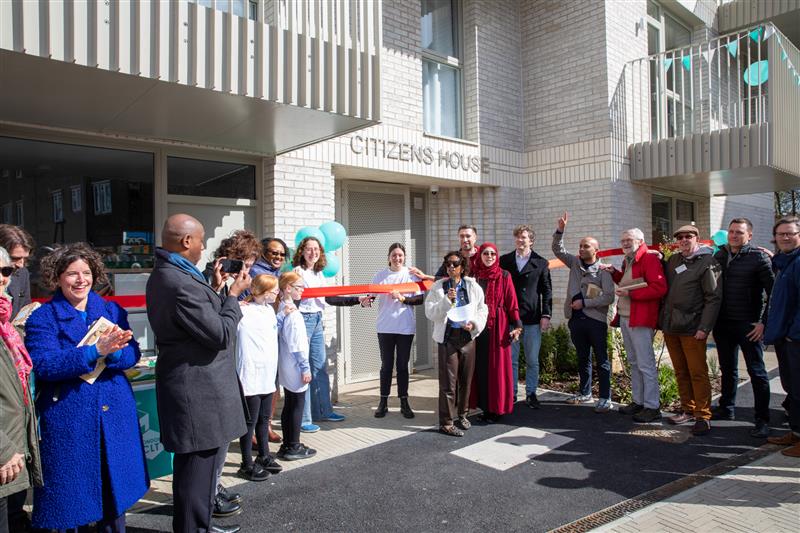Home is the anchor point from which we build our lives. When the core elements of safety, comfort, space to grow and long-term security are present, our home underpins our capacity to lead healthy, fulfilling lives. It can’t be an unreasonable expectation that whatever our social background, stage of life or level of disability, these core elements should be a given for housing development in 21st century Britain. But it has to be questioned whether this is a vision currently shared by the development industry and government.
The Grenfell Tower fire serves as a horrific and undeniable depiction of the degree to which the development sector has disregarded the goal of building homes that enable residents to lead healthy, fulfilling lives, in favour of the pursuit of cost cutting and maximisation of profit. In her review of fire safety and building regulation, Dame Judith Hackitt identifies that the combination of factors that made the Grenfell Tower fire possible represent a “cultural” issue within the construction industry, consisting of ignorance, indifference, lack of clarity on roles and responsibilities and inadequate regulatory oversight and enforcement, which she describes as a “race to the bottom.”
Whilst the Hackitt review and consequent activity within the construction sector and government is, of course, essential and welcome, its scope is limited to the issue of fire safety in high-rise residential buildings, and therefore falls short of representing a comprehensive response to the “race to the bottom” culture that caused the Grenfell Tower fire. That fire safety in a high-rise residential building such as Grenfell Tower can be so catastrophically compromised is a measure of the extent to which the regulatory system has failed, not evidence that the regulatory system is only failing in the area of fire safety. Consequently, if the regulatory response is limited exclusively to fire safety, it is unlikely to address the deep-seated cultural attitudes and practices that culminated in the Grenfell tragedy, and regularly manifest themselves at scale in the kind of poor quality housing developments reported in the Raynsford Review and recent media stories.
For many older and disabled people, the ability to lead a fulfilling life will fundamentally depend upon the extent to which the accessibility of their home permits it. There are 13.9 million disabled people in the UK, and it is predicted that by 2030 the number of older people with a disability or long-term health condition will increase by 2.25 million. However, evidence emerging from a freedom of information investigation carried out by the charity Aspire, reveals an acute shortage of the accessible homes we will need to house our increasingly disabled population. From the data provided by the English local authorities that responded to Aspire’s FOI request, on average it will take 12.5 years to house all wheelchair users currently on housing lists. Aspire also found that in some local authority areas, the projected waiting time is five times or longer for wheelchair-using households than those not requiring a wheelchair-accessible home. In a number of areas, this will mean that wheelchair users will wait decades for a suitable home, whilst non-wheelchair users only wait one or two years. Unbelievably, in one local authority, it will take over a century to house wheelchair users, but only five years for anyone not needing wheelchair accessible accommodation!
According to the English Housing Survey, only 7% of existing homes have the basic accessibility features that would enable a wheelchair user to even visit a home, let alone live in it. In 2015 the government took the welcome step of introducing optional design standards for accessible and adaptable housing, and wheelchair user housing into the building regulations. Local authorities are ‘encouraged’, but not required, to adopt these within local plans to meet the need for accessible housing. Evidence just published by Habinteg, however, reveals that outside of London, where the provision of accessible homes has been mandatory since 2004, the majority of local plans fail to set any requirement for accessible housing, and only 1% set a target for wheelchair accessible properties. However, even where councils seek to adopt accessible housing requirements, they are routinely fought by private developers and the Home Builders Federation.
It seems clear that without stronger intervention, our housing delivery model as it is currently configured is incapable of meeting the social and environmental challenges our society faces, or providing the kind of homes that 21st century Britons need and should have the right to expect. The campaign for a Healthy Homes Act represents a much-needed opportunity to refocus the debate towards a value-led housing delivery model capable of responding to these challenges.
This article was written by Andrew Shipley, disability campaigner and policy manager for Aspire, as part of a series of expert blogs for the TCPA’s Healthy Homes Act campaign.




